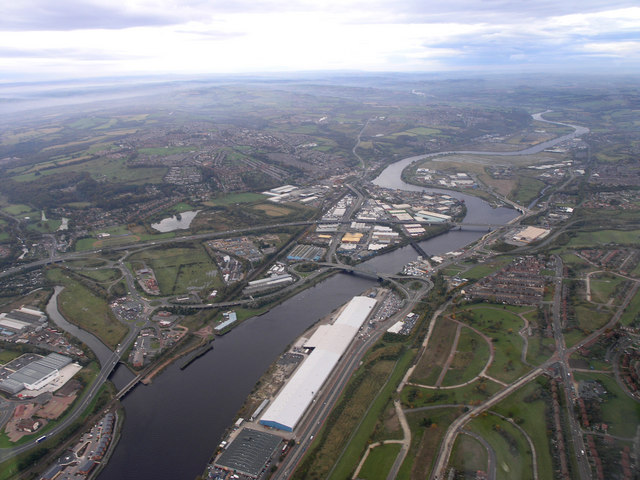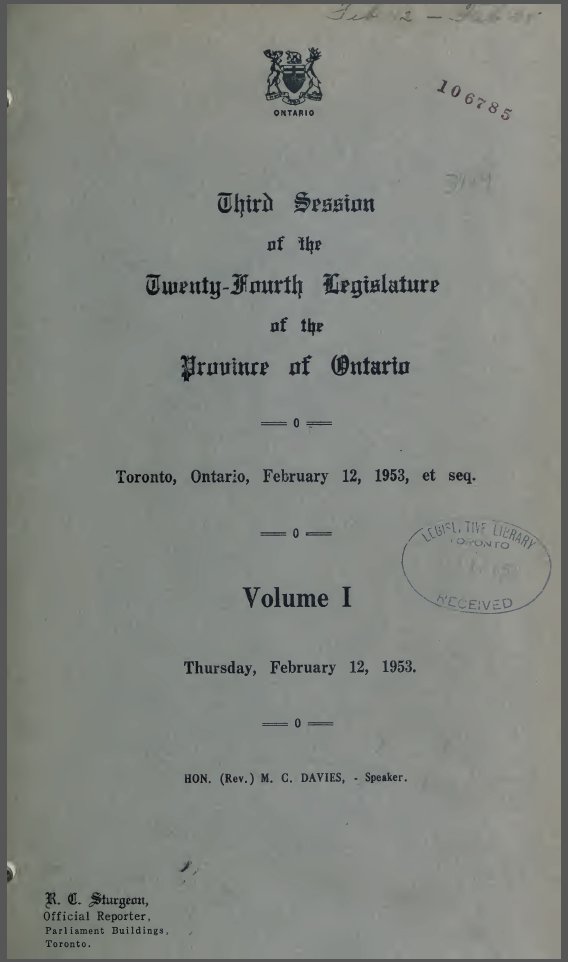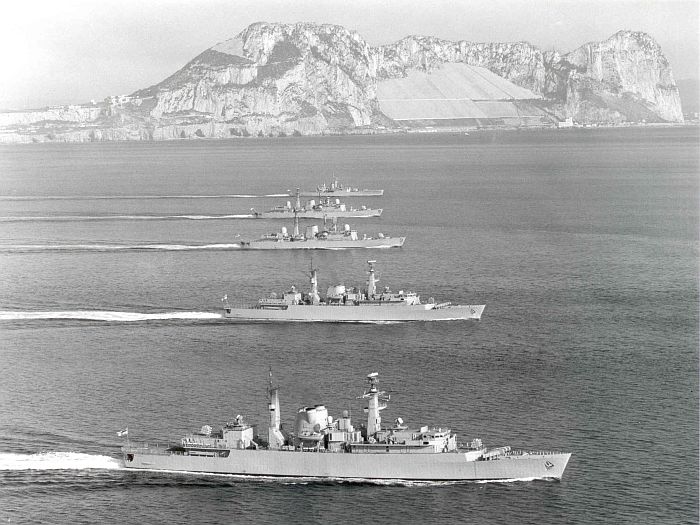|
HMS Spartan (S105)
HMS ''Spartan'' was a nuclear-powered fleet submarine of the Royal Navy's . ''Spartan'' was launched on 7 April 1978 by Lady Lygo, wife of Admiral Sir Raymond Lygo. The boat was built by Vickers Limited Shipbuilding Group (now a division of BAE Systems) at Barrow-in-Furness in Cumbria, England. She was decommissioned in January 2006. Operational history ''Spartan'' was ordered to sail south for the Falkland Islands two days before the Argentine invasion of the islands on 30 March 1982. ''Spartan'' was the first vessel to arrive in the islands and began to enforce a maritime exclusion zone imposed by the British. Shortly after, ''Spartan'' sighted Argentine merchant shipping mining the harbour at Stanley, but was not ordered to attack. This was partly due to British concerns about escalating the war too early, but also to avoid scaring off more lucrative targets such as the Argentine aircraft carrier . On 1 May, ''Spartan'' was marking ''Veinticinco de Mayo'', from just o ... [...More Info...] [...Related Items...] OR: [Wikipedia] [Google] [Baidu] |
Vickers Limited Shipbuilding Group
Vickers-Armstrongs Limited was a British engineering conglomerate formed by the merger of the assets of Vickers Limited and Sir W G Armstrong Whitworth & Company in 1927. The majority of the company was nationalised in the 1960s and 1970s, with the remainder being divested as Vickers plc in 1977. It featured among Britain's most prominent armaments firms. History Vickers merged with the Tyneside-based engineering company Armstrong Whitworth, founded by William Armstrong, to become Vickers-Armstrongs. Armstrong Whitworth and Vickers had developed along similar lines, expanding into various military sectors and produced a whole suite of military products. Armstrong Whitworth were notable for their artillery manufacture at Elswick and shipbuilding at a yard at High Walker on the River Tyne. 1929 saw the merger of the acquired railway business with those of Cammell Laird to form Metropolitan Cammell Carriage and Wagon (MCCW); Metro Cammell. In 1935, before rearmament began, ... [...More Info...] [...Related Items...] OR: [Wikipedia] [Google] [Baidu] |
Falkland Islands
The Falkland Islands (; ), commonly referred to as The Falklands, is an archipelago in the South Atlantic Ocean on the Patagonian Shelf. The principal islands are about east of South America's southern Patagonian coast and from Cape Dubouzet at the northern tip of the Antarctic Peninsula, at a latitude of about 52°S. The archipelago, with an area of , comprises East Falkland, West Falkland, and 776 smaller islands. As a British Overseas Territory, the Falklands have internal self-governance, while the United Kingdom takes responsibility for their defence and foreign affairs. The capital and largest settlement is Stanley, Falkland Islands, Stanley on East Falkland. The islands are believed to have been uninhabited prior to European discovery in the 17th century. Controversy exists over the Falklands' discovery and subsequent colonisation by Europeans. At various times, the islands have had French, British, Spanish, and Argentine settlements. Britain Reassertion of Britis ... [...More Info...] [...Related Items...] OR: [Wikipedia] [Google] [Baidu] |
Ships Built In Barrow-in-Furness
A ship is a large vessel that travels the world's oceans and other navigable waterways, carrying cargo or passengers, or in support of specialized missions, such as defense, research and fishing. Ships are generally distinguished from boats, based on size, shape, load capacity and purpose. Ships have supported exploration, trade, warfare, migration, colonization, and science. Ship transport is responsible for the largest portion of world commerce. The word ''ship'' has meant, depending on the era and the context, either just a large vessel or specifically a ship-rigged sailing ship with three or more masts, each of which is square-rigged. The earliest historical evidence of boats is found in Egypt during the 4th millennium BCE. In 2024, ships had a global cargo capacity of 2.4 billion tons, with the three largest classes being ships carrying dry bulk (43%), oil tankers (28%) and container ships (14%). Nomenclature Ships are typically larger than boats, but there i ... [...More Info...] [...Related Items...] OR: [Wikipedia] [Google] [Baidu] |
Swiftsure-class Submarines
The ''Swiftsure'' class was a class of nuclear-powered fleet submarines in service with the Royal Navy from the early 1970s until 2010. Six boats were built and commissioned. ''Swiftsure'' was decommissioned in 1992 due to damage suffered to her pressure hull during trials. followed in 2004 after defence cuts caused a reduction in the size of the Royal Navy submarine fleet. was decommissioned in January 2006, with following on 12 September 2006. was decommissioned on 26 September 2008. The remaining boat in the class, , was decommissioned in December 2010. The six boats of the class were not replaced, although the seven boats of the successor ''Trafalgar''-class submarines are in the process of being replaced by seven boats of the ''Astute''-class submarines. A few were upgraded with the capability to launch Tomahawk cruise missiles in addition to their original armaments of torpedoes, mines and anti-ship missiles. They were also the first class of Royal Navy submarines ... [...More Info...] [...Related Items...] OR: [Wikipedia] [Google] [Baidu] |
Cruise Missile
A cruise missile is an unmanned self-propelled guided missile that sustains flight through aerodynamic lift for most of its flight path. Cruise missiles are designed to deliver a large payload over long distances with high precision. Modern cruise missiles are capable of traveling at high Aerodynamics#Incompressible aerodynamics, subsonic, Supersonic speed, supersonic, or Hypersonic speed, hypersonic speeds, are self-navigating, and are able to fly on a non-Ballistics, ballistic, extremely low-altitude trajectory. History The idea of an "aerial torpedo" was shown in the British 1909 film ''The Airship Destroyer'' in which flying torpedoes controlled wirelessly are used to bring down airships bombing London. In 1916, the Americans, American Aircraft pilot, aviator Lawrence Sperry built and patented an "aerial torpedo", the Hewitt-Sperry Automatic Airplane, a small biplane carrying a TNT charge, a Sperry autopilot and barometric altitude control. Inspired by the experiments, the ... [...More Info...] [...Related Items...] OR: [Wikipedia] [Google] [Baidu] |
Scotland
Scotland is a Countries of the United Kingdom, country that is part of the United Kingdom. It contains nearly one-third of the United Kingdom's land area, consisting of the northern part of the island of Great Britain and more than 790 adjacent Islands of Scotland, islands, principally in the archipelagos of the Hebrides and the Northern Isles. To the south-east, Scotland has its Anglo-Scottish border, only land border, which is long and shared with England; the country is surrounded by the Atlantic Ocean to the north and west, the North Sea to the north-east and east, and the Irish Sea to the south. The population in 2022 was 5,439,842. Edinburgh is the capital and Glasgow is the most populous of the cities of Scotland. The Kingdom of Scotland emerged as an independent sovereign state in the 9th century. In 1603, James VI succeeded to the thrones of Kingdom of England, England and Kingdom of Ireland, Ireland, forming a personal union of the Union of the Crowns, three kingdo ... [...More Info...] [...Related Items...] OR: [Wikipedia] [Google] [Baidu] |
Hansard
''Hansard'' is the transcripts of parliamentary debates in Britain and many Commonwealth of Nations, Commonwealth countries. It is named after Thomas Curson Hansard (1776–1833), a London printer and publisher, who was the first official printer to the Parliament of the United Kingdom, Parliament at Westminster. Origins Though the history of the ''Hansard'' began in the British Parliament, each of Britain's colonies developed a separate and distinctive history. Before 1771, the British Parliament had long been a highly secretive body. The official record of the actions of the House was publicly available but there was no record of the debates. The publication of remarks made in the House became a breach of parliamentary privilege, punishable by the two Houses of Parliament (UK), Houses of Parliament. As the populace became interested in parliamentary debates, more independent newspapers began publishing unofficial accounts of them. The many penalties implemented by the governmen ... [...More Info...] [...Related Items...] OR: [Wikipedia] [Google] [Baidu] |
Falklands War
The Falklands War () was a ten-week undeclared war between Argentina and the United Kingdom in 1982 over two British Overseas Territories, British dependent territories in the South Atlantic: the Falkland Islands and Falkland Islands Dependencies, its territorial dependency, South Georgia and the South Sandwich Islands. The conflict began on 2 April 1982, when 1982 invasion of the Falkland Islands, Argentina invaded and Occupation of the Falkland Islands, occupied the Falkland Islands, followed by the invasion of South Georgia the next day. On 5 April, the British government dispatched a British naval forces in the Falklands War, naval task force to engage the Argentine Navy and Argentine Air Force, Air Force before making an Amphibious warfare, amphibious assault on the islands. The conflict lasted 74 days and ended with an Argentine Argentinian surrender in the Falklands War, surrender on 14 June, returning the islands to British control. In total, 649&nbs ... [...More Info...] [...Related Items...] OR: [Wikipedia] [Google] [Baidu] |
Fire In Anger
{{Short pages monitor ... [...More Info...] [...Related Items...] OR: [Wikipedia] [Google] [Baidu] |
Douglas A-4 Skyhawk
The Douglas A-4 Skyhawk is a single-seat subsonic carrier-capable light attack aircraft designed and produced by the American aerospace manufacturer Douglas Aircraft Company, and later, McDonnell Douglas. It was originally designated A4D under the United States Navy's pre-1962 designation system. The Skyhawk was developed during the early 1950s on behalf of the Navy and United States Marine Corps as a replacement for the propeller-driven Douglas A-1 (AD) Skyraider. The A-4 is a compact, straightforward, and lightweight aircraft for the era; its maximum takeoff weight of was roughly half of the Navy's weight specification. The Skyhawk has a short-span delta wing configuration, a tricycle undercarriage, and is powered by a single turbojet engine. The U.S. Navy issued a contract for the aircraft on 12 June 1952. On 22 June 1954, the XA4D-1 prototype performed its maiden flight; it went on to set a world speed record of 695.163 mph on 15 October 1955. On 1 October 1956, ... [...More Info...] [...Related Items...] OR: [Wikipedia] [Google] [Baidu] |
Sandy Woodward
Admiral Sir John Forster "Sandy" Woodward, (1 May 1932 – 4 August 2013) was a senior Royal Navy officer who commanded the Task Force of the Falklands War. Early life Woodward was born on 1 May 1932 at Marazion, near Penzance, Cornwall, to a bank clerk. He was educated at Stubbington House School, preparatory school in Stubbington, Hampshire. He then continued his education at the Britannia Royal Naval College in Dartmouth, Devon. Naval career On graduation from the Royal Naval College Dartmouth Woodward joined the Royal Navy in 1946.Debrett's People of Today 1994 He became a submariner in 1954, and was promoted to lieutenant that May. In 1960 he passed the Royal Navy's rigorous Submarine Command Course known as ''The Perisher'', and received his first command, the T-class submarine HMS ''Tireless''. Promoted to lieutenant-commander in May 1962, he then commanded HMS ''Grampus'' before becoming the second in command of the nuclear fleet submarine HMS ''Valiant''. In 19 ... [...More Info...] [...Related Items...] OR: [Wikipedia] [Google] [Baidu] |





